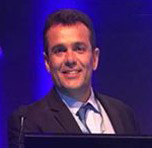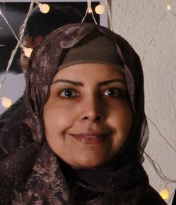Day 2 :
Keynote Forum
Rolando Toyos,
Medical Director and Founder of Toyos Clinic, USA
Keynote: Osmolarity in Dry Eye Disease

Biography:
Rolando Toyos is the Medical Director and Founder of Toyos Clinic. He received his Bachelor’s degree and Master’s degree from the University of California, Berkeley and Stanford University, respectively. He completed his Medical degree from the University of Illinois. He is Board Certified in Ophthalmology and specialized in Cataract Surgery, LASIK, Glaucoma, and Dry Eye. He is one of the most experienced surgeons in the country, completing over 35,000 cataract surgeries, 20,000 glaucoma laser treatments and 25,000 LASIK surgeries. He was the first surgeon to combine Laser Cataract Surgery with AquaLase creating a new Laser for Cataract Surgery L4C procedure. He holds various patents including one for a light based technology used for the treatment of dry eye. He is the
inventor of the procedure Intense Pulse Light (IPL) for dry eye disease.
Abstract:
Purpose: In this prospective study, we show the influence of intense pulsed light therapy (IPL) on tear osmolarity, an increasingly
important metric of dry eye disease. Previous studies have measured the effectiveness IPL has had on other metrics including tear break up time (TBUT), lipid layer grade (LLG), tear evaporation rate (TER), tear meniscus height (TMH), and subjective responses from patients.
Methods: Single center prospective study included 30 patients and 60 eyes. Patient’s ages ranged from 18 to 90 years old with
75% of participants being female. All patients had dry eye disease with a TBUT of 10 seconds or less. Tear osmolarity was
measured bilaterally before a single IPL treatment followed by one drop of topical NSAID. Bilateral tear osmolarity was then measured again one month later.
Results: Average tear osmolarity pre-treatment OD was 303 mOsm/L and OS was 302 mOsm/L. Average tear osmolarity posttreatment was OD 295 mOsm/L and OS 295 mOsm/L. Paired t-test was performed showing the change in tear osmolarity to
be statistically significant in each eye, OD p=0.002 and OS p=0.001.
Conclusions: A statistically significant decrease in tear osmolarity from abnormal to normal range demonstrates an improvement in tear film quality after one treatment with IPL, thus suggesting IPL's effectiveness in treating dry eye disease.
- Retina & Retinal Disorders | Ophthalmology Practice & Case Studies
Location: Chamber Suite

Chair
Tarun Sharma
Worcestershire Acute Hospitals NHS Trust, UK
Session Introduction
Mouna Al Saad
University of Jordan, Jordan
Title: Sub-foveal choroidal thickness in diabetics and non-diabetics

Biography:
Mouna Al Saad is a Consultant Ophthalmologist and an Assistant Professor in the Department of Ophthalmology at the University of Jordan. Her topics of interests are Vitreoretinal Surgery, Corneal Graft and Modern Cataract Surgery. She is a member of the Jordanian Ophthalmic Society and fellow of the Royal College of Physicians and Surgeons of Glasgow, UK. She has already worked as a Researcher, Teaching Assistant and a General Ophthalmologist in the University of Jordan,and Jordan University Hospital, Jordan. She has done her Medical degree from the University of Jordan, School of Medicine, Jordan. She has done her Residency in Ophthalmology from the Jordan University Hospital, University of Jordan.
Abstract:
Objectives: The objectives of this study are to measure the macular choroidal thickness in diabetics without diabetic retinopathy and
to compare it with non-diabetics, and to correlate that with age and refractive error.
Method: This is a retrospective, observational and case series study. EDI-OCT images were obtained in diabetics without apparent
diabetic retinopathy with a spectral domain OCT. The sub-foveal choroidal thickness was measured from the outer boarder of the
retinal pigment epithelium to the inner scleral boarder. Statistical analysis was performed to evaluate CT and to correlate it with age,
refractive error in eyes without diabetic retinopathy.
Results: We studied 65 eyes of 38 patients (30 eyes were of diabetic patients) aged between 26 and 79 years. There were 17 males and
21 females in which 30 eyes were of 21 diabetic patients and 35 eyes were of 19 non-diabetic patients. It was observed that, the mean
CT had no significant difference between patients with diabetes mellitus and non- diabetic subjects (256±108 um vs. 265±105 um),
p=0.51.
Conclusion: Patients with diabetes mellitus had a slightly but statistically insignificant, thicker sub-foveal choroid than non-diabetic
patients
Dr. Dorina Cheles
Department of Ophthalmology, Baruch Padeh Medical Center, Israel
Title: Colony Forming Unites - Endothelial Progenitor Cells (CFU-EPCs) –A surrogate marker for diabetic retinopathy and high cardiovascular mortality rate

Biography:
Abstract:
Diabetic retinopathy is a risk factor for increased cardiovascular death. Our purpose was to find a significant difference in levels of endothelial progenitor cells (EPCs) in the peripheral blood of patients at different stages of diabetic retinopathy. In this prospective study, colony forming units of endothelial progenitor cells (CFU-EPCs) in peripheral blood were counted. Forty subjects
were enrolled (10 healthy [41±8 y], 10 type 2 diabetes mellitus (T2DM) [64±12 y] without retinopathy, 10 T2DM patients [62±26y] with non-proliferative retinopathy (NPDR), 10 T2DM patients [66±9 y] with proliferative retinopathy (PDR)). The study was approved by the ethics committee of the hospital and every subject signed a consent form before enrollment. Growing CFU-EPCs was according to the Hill's EPCs protocol. Blood was drawn early in the morning and was processed within one hour. Mononuclear cells were separated and cultured on fibronectin-coated plates with EndoCult medium (Stemcell Technologies, Vancouver, Canada)
for 5 days. CFU-EPCs were counted on day 5 (an average of 8 wells). It was observed that healthy subjects had 36±8 CFU-EPCs, patients without retinopathy had 13±12 CFU-EPCs (p<0.01), patients with NPDR had 22±26 CFU-EPCs (p=NS), and 2±2 CFUEPCs in patients with PDR (p<0.01). A significant difference was found between patients with PDR and with NPDR (p<0.05). It was also observed that, CFU-EPCs were inhibited in T2DM patients with DPR. Levels of CFU-EPCs can be used as a surrogate biologic marker to determine the severity of diabetic retinopathy and for cumulative vascular risk.
Tarun Sharma
Worcestershire Acute Hospitals NHS Trust, UK
Title: Enabling patient-centred care through information and technology

Biography:
Tarun Sharma is a Consultant Ophthalmic Surgeon at Worcestershire Acute NHS Trust since 2007. He has done his Ophthalmology training from Midland Eye Centre, Oxford Eye Hospital and Moorfields Eye Hospital in UK. He has special interest in routine and complex cataract surgery. He has also delivered lectures at Royal College meetings and abroad (Europe, USA and Asia) on the subjects of glaucoma management and modern glaucoma surgery, as well as on cataract surgery in patients with glaucoma. He has launched the Worcestershire Glaucoma Support Group, which provides education and support to patients with glaucomaenabling them to achieve better outcomes. He has won many awards in Ophthalmology for best patient education and teaching initiative. He has also worked with the Department of Health UK and Mckinsey USA to help in the development of national policies for UK eye care.
Abstract:
The level of patient education given is substandard and the current patient education systems are ineffective. The main reasons are outdated materials, inappropriate timing and manner of rushed presentation. Most people need to review information three to five times before retention. Worcestershire glaucoma team pioneered patient education through support meeting and digital patient education. Worcestershire Glaucoma Support Group was set up in 2009 to provide education and support to patients with glaucoma
to improve compliance and adherence with treatment. We organize 2-3 patients/public free meeting every year. We have an average of 135 attendees. Such meetings provide patient-to-patient interaction and networking. We decided to make such support online by developing a website providing educational videos regarding various treatment options. Patients have an option to watch these videos as and when they want, in the company of their family (who were unable to attend hospital appointment). This can be done in the
comfort of their living room. It gives them an option to review/replay the video as much time as needed. We also developed up to date downloadable information leaflets for our patient. These educational videos are regularly used in glaucoma unit for informed consent purposes. We have more than 4500 visitors to our website in 12 months. Visitors have downloaded more than 22,000 pages from our website. Our online feedback score is 4.9/5. Support group’s initiatives led to significant fund raising which allowed ophthalmology
department to purchase equipment worth £250,000. Digital patient education is way forward for consent and service deliver purposes while enhancing the patient experience and quality of service.
- Ophthalmology Surgery | Microbiology in Ophthalmology
Location: Chamber Suite

Chair
Magno Ferriera
Chairman Federal University Of Uberlandia-UFU, Brazil Session
Session Introduction
Tarun Sharma
Worcestershire Acute Hospitals NHS Trust, UK
Title: Trabectomevs I-stent in moderate open-angle glaucoma-single surgeon results
Time : 14:25-14:50

Biography:
Tarun Sharma is a Consultant Ophthalmic Surgeon at Worcestershire Acute NHS Trust since 2007. He has done his Ophthalmology training from Midland Eye Centre, Oxford Eye Hospital and Moorfields Eye Hospital in UK. He has special interest in routine and complex cataract surgery. He has also delivered lectures at Royal College meetings and abroad (Europe, USA and Asia) on the subjects of glaucoma management and modern glaucoma surgery, as well as on cataract surgery in patients with glaucoma. He has launched the Worcestershire Glaucoma Support Group, which provides education and support to patients with glaucoma enabling them to achieve better outcomes. He has won many awards in Ophthalmology for best patient education and teaching initiative. He has also worked with the Department of Health UK and Mckinsey USA to help in the development of national policies for UK eye care.
Abstract:
Aim: To compare the safety and efficacy profile after combined micro-incision cataract surgery (MICS) and micro-invasive glaucoma surgery (MIGS) with the ab interno trabeculectomy (Trabectome®) versus iStent® inject devices in patients with open-angle glaucoma (OAG) and cataract.
Method: This retrospective comparison study included 60 eyes which were treated with combined MICS and ab interno trabeculectomy (group I, Trabectome®) (30 eyes) and iStent® inject devices (group II, GTS 400) in 30 eyes. Primary outcome measures included intraocular pressure (IOP) and glaucoma medication after 6 weeks, 3, 6 and 12 months follow-up. Secondary outcome measures were number of postoperative interventions, complications and best-corrected visual acuity (BCVA).
Results: Mean preoperative IOP decreased from 23.3±3.7 mmHg in group I and 22.8±4.1 mmHg in group II to 14.8±3.6 mmHg for trabectome and 16.8±2.3 mmHg for iStent inject, respectively at 12 months after surgery. When percentage drop was assessed, group 1 (trabectome) had 37.17% drop in IOP, while group II had 22.93% drop in IOP. No vision-threatening complications such as choroidal effusion, choroidal hemorrhage, or infection occurred. In each group, 2 eyes developed cystoid macular edema which responded to topical treatment. In each group trabeculectomy had to be performed in one eye due to insufficient IOP lowering effect.
Conclusions: Ab interno trabeculectomy and iStent® inject were both effective in lowering IOP with a favorable and comparable safety profile in a comparative study over a 12-months follow-up in OAG. Trabectome appears to have a greater percent drop in IOP than iStent in this study. However, longer follow-up of these patients will be necessary to determine long-term outcomes and to evaluate significant differences.
Lelio Sabetti
University of L’Aquila, Italy
Title: Equatorial scleral anchor for the weakening of the inferior oblique muscle
Time : 14:50-15:15

Biography:
Lelio Sabetti is an Ophthalmologist and the In-charge of the Pediatric Ophthalmology and Strabismus Unit in the Department of Biotechnological and Applied Clinical Sciences at the University of L’Aquila, Italy. His work focuses on strabismus in children and adults, and treatment of amblyopia. He is a member of the Italian Strabismus Association (AIS) and the European Strabismological Association (ESA).
Abstract:
Purpose: The study was conducted to evaluate the mid-term effectiveness of a new surgical approach in the reduction of overaction of the inferior oblique muscle.
Methods: A new surgical treatment was developed consisting of suturing the muscle to the sclera at the Gobin point with tendon sparing by way of a micro-incision to reduce any tissue damage during the surgical procedure and to enhance the healing process. The treatment was evaluated postoperatively in a group of 143 patients with primary or secondary inferior oblique overaction.
Findings: All patients experienced a complete resolution of the elevation in adduction with no residual vertical imbalance and an improvement in lateral incomitance.
Conclusion & Significance: The outcome of the new equatorial scleral anchor surgical treatment has been generally accepted as favorable in our study, also if compared with the results yielded by the most frequently used anterior transposition of the inferior oblique muscle. The new surgical treatment appears to be a relatively less invasive, safe, reversible technique, including the potential to perform the procedure with an adjustable suture..
Seyda Atabay
Private Clinic, Turkey
Title: Under eye filler practices as under eye hollows and dark circles treatments
Biography:
Seyda Atabay has completed her education from Ege University of Medicine in the year 2002. From 2002-2008, she completed her Ophthalmology studies and
has been working as an Eye Disease and Surgery Specialist at the Izmir Ataturk Education and Research Hospital. She has experience in eye cataract surgery,
excimer laser and eyelid defects, and blepharoplasty. She has many published papers and has also attended many conferences and symposiums. She is a member of Turkish Ophthalmology Association, American Academy of Ophthalmology, The European Academy of Facial Plastic Surgery and Izmir Medical Chamber and Facial Plastic Surgery Association.
Abstract:
Periorbital area is the most frequently-used area of contact in our social lives, especially bilateral relations. It reflects our tiredness and calmness. The changes in our frame with age, metabolism, environment and nutrition are seen in this area the most. Eye and periorbital area shows the age, health and mental state of a person clearly. In the treatment of hollows and dark circles under
the eye, cold application, mesotherapy, PRP, external cream and filler applications are applied. We carried out under eye hyaluronic acid filler on the patients who consulted to our clinic with complaint of hollows and dark circles under eye between March 2014 and October 2016. We used cannula and needle techniques. Firstly, under eye area was deodorized with antiseptic in a sterile way. After orbital margin was palpated, hyaluronic acid filler was injected over the periost with deep application and with the attempt of needle it was arrived to the area with two or three separate entrances. In the usage of cannula, the filler was performed by applying only one skin entrance. Before every application, extra attention was showed by withdrawing the injector in order to avoid intravascular treatment. Patients were warned and control appointments for 15 days later were given. In the control, patients who need more filler
were touched up. Hyaluronic acid is a polysaccharide that is found in human body and in many other living beings naturally. Fifty percent of hyaluronic acid created by the body occurs in epidermis. It is the most favorite filler substance since it has homogeneous distribution, could be removed from the body entirely and with few side effects. Hyaluronic acid in under eye is a type of filler which was developed for especially that area to reduce and remove the problems. Also it shows many differences from normal fillers with its context. Besides having cross link and half cross link context, this filler has 8 amino acids, 3 antioxidant, a zinc, a copper and vitamin B6, so it eases the application by providing skin reconstruction and anesthesia to the area and it gives comfort to the patient.
The procedure of hyaluronic acid filler is an alternative treatment in the patients who have dark circles and hollows under eye. The procedure with cannula technique is safer for the patient’s satisfaction and risks of application, but this technique should be done by experienced doctors. When it is carried out with proper patient choice and accurate technique, results will be satisfactory for patient and doctor.
Xiaoqin Jin
Wuhan Eyegood Ophthalmic Hospital, China
Title: Selection strategy of different surgical methods for abducens nerve palsy

Biography:
Xiaoqin Jin is the Vice Chief Physician, the member of International Academy Orthokeratology Asia (IAOA), the member of China Association for Myopia Prevention and Control, and the Director of Ophthalmology Branch of Chinese Association of Minority Medicine. She has worked at the Xiantao Hospital of Traditional Chinese Medicine in Hubei province during 1994 to 2003. Currently, she is working as the Chief Dean of Pediatric Ophthalmology department at the Wuhan Eyegood Ophthalmic Hospital. She has published numerous papers in various Chinese journals. Her work focuses on the development of Pediatric Ophthalmology. She has completed more than 13,000 operations in terms of microscopic strabismus, nystagmus and posterior scleral reinforcement surgery.
Abstract:
Purpose: To explore the selection strategy of different surgical methods for paralytic esotropia caused by abducens nerve palsy.
Method: A total of 21 cases of paralytic esotropia were studied. Two cases were congenital and two cases were traumatic. There were 17 cases with unknown reasons. The paralytic symptoms of these patients were stable for more than 6 months and there was nothing abnormal detected in the MRI examination of orbital region and brain. Each patient was evaluated for ocular
muscles exams including strabismus degree, eye movement, traction test, orbital check and MRI of the brain. Patients with refractive errors accepted the correction of ametropia before the surgery. Different surgical methods were selected according to the extent of paralysis, limited degree of eye movement, strabismus degree and the outcome of traction test. There were four patients with incomplete paralysis. One of them was given the method of medial rectus recession combined with external rectus amputation, and another three were given the way of Jensen’s procedure or combined with medial rectus recession. A total of 17 cases had complete paralysis. According to the level of the medial rectus contracture and the degree of strabismus, Kraft’s procedure was applied to fourteen patients. Knapp’s procedure was applied to three patients. The target was tried to correct strabismus by one-stage surgery.
Results: The esotropia of 19 patients were corrected over the 2-years follow-up. Abduction function of the eyeball movement was improved after the surgery. Two patients were regressed after one month and the cure rate was 91.30%.
Conclusions: To obtain the excellent surgical results, surgical options for paralytic esotropia caused by abducens nerve palsy can be selected according to the degree of the paralysis, limited degree of eye movement and traction test.

Biography:
Seyda Atabay has completed her education from Ege University of Medicine in the year 2002. From 2002-2008, she completed her Ophthalmology studies and
has been working as an Eye Disease and Surgery Specialist at the Izmir Ataturk Education and Research Hospital. She has experience in eye cataract surgery,
excimer laser and eyelid defects, and blepharoplasty. She has many published papers and has also attended many conferences and symposiums. She is a member of Turkish Ophthalmology Association, American Academy of Ophthalmology, The European Academy of Facial Plastic Surgery and Izmir Medical Chamber and Facial Plastic Surgery Association.
Abstract:
Introduction: Periorbital area is the most frequently-consulted and watched out area in bilateral relations, so it has gained much more importance in recent years. It is possible to look healthier and younger with lots of practice applied around eye. With this reason, more and more patients apply to clinics to look better every day. We would like to discuss the treatments which provide patients to become better, younger and healthier.
Purpose: This study is with the purpose of representing the algorithm of periorbital area rejuvenation.
Discussion: The most important step is a successful pre-treatment procedure. Firstly, patient’s problems should be understood carefully. Since the problem which we see and the patient’s disease need not be the same. In this case, no matter how the treatment is successfully done, we cannot satisfy our patient. Sometimes patients have unusual expectations. When these kinds of patients come across, the treatment should not be done immediately. After examining the patient in detail, the treatment should be told clearly and repeated again and again. While the treatment is thought as surgical and medical, it can be also
combined. It should be decided according to the request of patient and its satisfying outcome. In the patient who complains about upper droopy eyelid, contexts of the eyelid and whether they include additional pathology or not should be examined. Eyelid, eyebrow and eyelash ptosis should be evaluated. Whether excised area includes fat package or not without skin and
orbicularis should be reviewed. In the patient with the request of low eyelid blepharoplasty, the trace of entropion should be looked. With the snap back test, the laxity of low eyelid should be examined. In this part, the existence of scleral show helps us. Additionally, cheek looseness and laxity in the malar pad should be evaluated. In the patient, medical treatment can be
thought but not surgical or in addition to that surgery and medical treatment can be planned. In this part, the treatments that help us are Botox in eyebrow lid and goose foot area and fillers in hollows under eye and under eye bags. In the widespread discoloration treatments, serum therapy or mesotherapy, and PRP applications can be planned with the aim of skin hydration.
- Neuro-Ophthalmology | Cornea Infection and Inflammation | Glaucoma
Location: Chamber Suite

Chair
Brunno Dantas
Brazilian Society Of Ophthalmology, Brazil
Session Introduction
Katalia Koves
Semmelweis University of Medicine, Hungary
Title: Basic research about the neural connections between the eye and the neuroendocrine system

Biography:
Professor Katalin Köves MD, PhD, DSc graduated from Medical University of Pécs, Hungary and she was employed by the Department of Anatomy, Histology and Embryology. Later she moved to the Department of Anatomy, Histology and Embryology of Semmelweis University, Budapest, Hungary. She received a four- year scholarship in Dr. Arimura’s laboratory (Tulane University, New Orleans, LA) where Pituitary Adenylate Cyclase Activating Polypeptide(PACAP) was discovered. After returning to Hungary she investigated the presence of PACAP in various organs and its role in the gonadotropic hormone secretion. Now she is mainly interested in studying neuronal connections using various tracing techniques and immunohistochemistry
Abstract:
Ample evidence indicates that both retinofugal (classical visual and the retinohypothalamic pathway) and retinopetal connections (centrifugal visual system) are found between the eye and the central nervous system. The most important retinofugal connection is the classical visual pathway. Scharrer hypothesized that photic stimuli from the eye are conjucted not only to the main visual centers, but also to some hypothalamic neurons and then to neuroendocrine effector cells. He called this system as photoneuroendocrine. The anatomical basis of this system is the retinohypothalamic tract. The main retinorecipient area of the hypothalamus is the suprachiasmatic nucleus which regulates biological rhythms (biological clock). More than hundred years ago, Cajal and Dogiel described termination pattern of the fibers deriving from the avian central nervous system. However, the location of nerve cell bodies was not known at that time. In the last century many data accumulated about these neurons not only in lower vertebrates but in mammals as well. The structures where the neurons give rise to the centrifugal visual fibers in mammals are the following: The pretectum, midbrain, dentate gyrus, hippocampus, olfactory
tubercle, habenula, indusium griseum, and the hypothalamus. The centrifugal visual fibers enter the optic nerve layer, then reach the inner plexiform layer and terminate in the inner nuclear layer of the retina in the vicinity of the amacrine cells. A series of neuropeptides and neurotransmitters have been described in the origin of the centrifugal visual system i.e., luteinizing
hormone releasing hormone, pituitary adenylate cyclase activating polypeptide, vasoactive intestinal polypeptide, serotonin, histamine and leu-enkephalin. Several hypotheses exist on the function of this system. Centrifugal visual system arising from the histaminergic mammillary neurons modifies the sleep/wake cycle. Hallucinogenic drugs through the limbic system may
cause disturbance of visual function and result in seeing visual hallucinations or distorted images.

Biography:
Jagmohan Dyal Singh is pursuing his BS in Biochemistry, Genetics and Molecular Biology (Major) and Applied Mathematics (Minor) through National Credit Policy of ACE (American Council of Education). He himself is suffering from amblyopia comorbid with refractive squint. He corrected his visual handicap by designing a special type of spectacle which gave him the power to read and eventually complete his education.
Abstract:
Lazy Eye” syndrome or amblyopia is a common phenomenon scattered throughout the human population. It is estimated that around 5% of the human population suffers from this syndrome along with diplopia, and refractive squint present in many or rather most of the cases. It is quite possible that other animal species that depend on stereoscopic vision for their survival are also
prone to this condition in the same frequency as the human population. During prehistoric and ancient times, this condition did not interfere with human survival and this is the reason of its prevalence among the human population even in the present times. As it is present among 5% of the human population, it is no doubt a genetic condition. It has presented itself in individuals that have a genetic history of this condition in the maternal or paternal lineages. This condition is a major liability for the sufferer in the modern world. During ancient times, when man started as a hunter-gatherer and until the human world did not depend on the written word, this condition was a benign syndrome, possibly without any competitive disadvantage. That is the reason this condition has survived into the modern world. In the modern world, the major disadvantage is in field of academics. Children suffering from this condition are at a disadvantage due to their inability to study like other normal children. In the amblyopic patients, having diplopia and refractive squint near stereoscopic vision is disrupted during reading and other near vision activities. Two different images that are created in the visual cortices do not overlap. The glasses force the visual cortices to fuse the two different images into one which otherwise is impossible and makes amblyopia comorbid with refractive squint a difficult malady to correct with present treatment options. These glasses are based on the neurobiology of vision. How stereoscopic vision is processed by the brain and the understanding of underlying cause that produces this deficit in the brain of individuals afflicted with this disorder is also conceptualized in this
treatment option. Why 3D optics is helpful in correcting this disorder in the brain is also hypothesized in this paper. These glasses should only be used for near vision activities like reading through a book but not for reading through a computer screen or watching television, as no diplopia is present when words or visuals are seen on an illuminated background, although amblyopic patients who suffer headache while using a computer shall benefit immensely from this procedure. This method will correct the visual deficit and convergence insufficiency with 100% positive results and shall improve the academic capabilities of children suffering from amblyopia and refractive squint who complain of diplopia and headache while reading. These glasses will also correct the binocular acuity of individuals suffering from amblyopia. This can be done by breaking the suppression of visual signals sent by the amblyopic
eye to the brain. Prolonged use of these glasses will train the brain to make use of signals and images created in both the visual cortices into one. Hence, the brain will be forced to utilize visual signals from both the eyes due to its neurophysiology.

Biography:
Brunno Dantas is an ophthalmologist. Professor of special contact lenses of the specialization course in ophthalmology of the Brazilian Society of Ophthalmology
Abstract:
Keratoconus is a non-inflammatory, often progressive, corneal disease that makes the cornea thinner and modifies its normal curvature, leading to poor visual acuity. The cornea often acquires anomalous conical shape, from which comes its name.This corneal clinical condition has always been considered as an impediment to the orthokeratology technique. It affects approximately
one person in every two thousand people worldwide, causing visual impairment and usually develops up to the age of 40 years. There are some techniques and conducts in the management of keratoconus, among them corneal crosslink, corneal contact lens adaptation and scleral lenses, intracorneal ring implantation, and corneal transplantation. The need for adaptation of corneal or scleral lenses after surgical procedures is relatively common, even if this procedure is minimally invasive, which is not well received by patients, who hoped to avoid or reduce the need for Use of these lenses. Observing the ability to reshape the cornea with keratoconus, in some initial cases it is possible to make a discreet change in the technique and in the way of adapting the orthokeratology lens, achieving in some cases good visual acuity of these patients without the necessity of using corneal contact lenses or scleral lenses during the day. The application of this variation of the orthokeratology technique allowed, in these selected cases of keratoconus, the improvement of the visual acuity of the patient during the day, making unnecessary the use of rigid contact lenses.

Biography:
Sahar Awwad is a Post-doctoral Research Scientist at the University College London, School of Pharmacy, UK. She has recently completed her PhD under the supervision of Professor Steve Brocchini and Professor Sir Peng Tee Khaw. She obtained two scholarships for her PhD: (i) UCL Overseas Research Scholarship (ORS), and (ii) NIHR Biomedical Research in Ophthalmology at Moorfields Hospital. She has done her MSc in Drug Delivery from the University of London, School of Pharmacy (London, UK) and BPharm from Jamia Hamdard University (New Delhi, India). She has worked on various projects that have resulted in the development of a new in vitro model of ocular pharmaceutics along with a new strategy for extending the duration of action of therapeutic proteins in the eye. Her projects are widely based on drug delivery, ocular pharmaceutics, determination of IVIVCs for ocular PK and biodistribution properties, protein production, protein modification and protein characterization (surface plasmon resonance, stability and activity). She is the Co-founder of Optceutics Ltd., a new company utilizing the
PK-Eye to develop new formulations.
Abstract:
Damage to the posterior segments accounts for over 70% of the blind registrations in Europe. Treating many blinding conditions requires a medicine to be in the posterior cavity for a sufficient period of time. Inflammatory, angiogenic and fibrotic process in the retina causes tissue damage and vision loss. These biological processes are also major contributors to the failure of current treatments for these diseases. As the elderly segment of the population continues to grow, there is an urgent and unmet need to optimize the dose and duration of action of medicines in the posterior segment. The development of new therapeutic proteins is of particular importance since proteins tend to be fast-acting, selective and potent. New dosage forms and drug delivery systems
(DDSs) are also being developed to augment the treatment of chronic blinding conditions and new DDSs are particularly needed for therapeutic proteins. During preclinical development, allometric modeling from in vivo models is not reliable due to: (i) the multitude of anatomical differences between animal and human eyes; and (ii) the immunological response of animals caused by
the administration of a humanized protein. The formation of anti-drug antibodies (ADAs) in animals towards humanized proteins results in accelerated clearance rates making it impossible to evaluate prolonged dosage forms of new protein therapeutics. To prolong the release of a protein, a wide array of novel injectable formulations are being developed and reported in literature. The PK-eye in vitro model is a two-compartment, aqueous outflow model that has been shown to be particularly useful to estimate human protein
PK profiles and to determine protein stability properties. Given the current design of the PK-Eye, there is now an opportunity to establish correlations with in vivo models using different injectable dosage forms. The PK-Eye model is used to evaluate new DDS and formulations that are being developed to prolong the release of a protein therapeutic. The PK-Eye is also being used to develop long- acting formulations and implants derived from non-protein low molecular weight (MW) actives. In contrast to proteins, low MW actives will generally clear by both (i) aqueous outflow and (ii) retinal permeation into the retina choroid sclera (RCS) pathway. Poorly soluble steroids are clinically used as suspensions and implants. TA (Kenalog®) displayed a residence time in the PK-Eye model that was 50% longer than what is observed in humans. Using permeation data to estimate retinal clearance pathways allow the determination of in-vitro in-vivo correlations (IVIVCs) during preclinical research. As a result, use of the PK-Eye can also estimate the human clearance times of long-acting implants of permeable drugs.
Xiao Wen Mao
Loma Linda University School of Medicine and Medical Center, Loma Linda, CA, U.S.A.
Title: Spaceflight and radiation induces microvessel and structural damage in ocular tissue
Biography:
Abstract:
There is a concern that degradation of vision as a result of space flight may compromise both mission goals and long-term quality of life after space travel. Degradation of vision associated with space travel may be due to a combination of gravitational changes and exposure to ionizing radiation. The retina and the retinal vasculature also play important roles in vision. Nonetheless, the retina and the retinal vasculature have not been studied extensively in relation to space travel and space radiation. The goal of the present study was to characterize the oxidative damage and induction of apoptosis in retinal endothelial cells after whole-body irradiation exposure of 0.1 to 1 Gy with of 600 MeV/n 16O ions, 150 MeV/n protons or 60Co gamma rays. We also investigate spaceflight environment-associated retinal damage from mice flown in the space shuttle Atlantis (STS-135). The role of antioxidant MnTE-2-PyP in protecting the ocular tissue and retinal microvessels from radiation damage was also evaluated. Our study revealed that exposure to low-dose ionizing radiation induced oxidative damage and apoptosis in the retina. Significant changes in retinal endothelial cells
occur at doses as low as 0.1 Gy. There were significant differences in the responses of endothelial cells between radiation types. Our flight study revealed that spaceflight conditions induced significant apoptosis in the retina especially inner nuclear layer (INL) and ganglion cell layer (GCL) compared to ground controls. The data provided the first evidence that spaceflight conditions induce oxidative damage that results in mitochondrial apoptosis in the retina. This data suggest that astronauts may be at increased risk
for late retinal degeneration. Our results also demonstrated that MnTE-2-PyP has protective effects on photoreceptor and retinal capillary from radiation damage, suggesting metalloporphyrin antioxidants may play an important role regulating the oxidative damage induced by radiation.
- Ophthalmology Instruments | Optometrist Courses
Location: Chamber Suite

Chair
Jason Chin
Andover Eye Associates and New England College of Optometry, USA
Session Introduction
Hala Nassim
King Fahad Hospital of the University, Saudi Arabia
Title: Management of a case of Cherubism pseudo ptosis and euryblepharon by orbital floor decompression

Biography:
Abstract:
Purpose: Identify the clinical presentation of cherubism in the orbit and its management.
Methods: In this case report we discuss a case who presented to us with bilateral pseudo ptosis and euryblepharon, when evaluated the patient had features of cherubism , with similar family members with the same problem , the radiological finding of bilateral orbital floor bony mass extending from the roof of the maxillary sinus , pushing the globe superiorly and causing pseudo ptosis. .
Discussion: The removal of large bony expansion with floor spacer implant treatment of superior globe displacement reliving pseudoptosis and eurybepharon. Biopsy confirmed giant cell reparative granuloma.
Results: In this presentation we discuss the presentation of cherubism and its clinical characteristics and different methods of management, with our management simplicity and effectiveness
Conclusion: In the management of cherubism orbital finding, bone removal of the floor of the orbit and spacer placement is safe and
effective.
Jason Chin
Andover Eye Associates and New England College of Optometry, USA
Title: Incorporating clinical trials into your daily practice

Biography:
Abstract:
I. Introduction/Purpose
A. Jason Chin O.D., F.A.A.O.
1. Credentials 2. Disclosures 3. Experience 4. Goal of talk – To present to you a brief overview on how to incorporate clinical trials into your practice. Contact lens trials will be referenced for example purposes but this guideline can be use for any type of clinical trial.
II. Before you start
A. Evaluation/Considerations: What questions should you ask yourself before attempting to conduct a clinical trial.
1. What kind of trial(s) do you want to do? / What do you want to test?
a) Comparative Trial
b) Marketing Trial
c) New Product Trial
2. Size of study? – How many patients will you need to enroll and complete to demonstrate clinically significant results
3. Do you currently have a sufficient patient database to accomplish your goal or will you need to recruit patients from outside
of your practice?
a) Modality of a lens type. i.e. Daily disposable lens wearers, extended lens wearers
b) Specific condition for a lens type. i.e Keratoconus
c) Prescription range. i.e Presbyopes, astigmats
d) Non contact lens wearers. i.e. For comparison of new wearers
3. Do you have the proper space and staffing?
a) Does your practice have enough lanes to allow an efficient flow for the trial?
b) Does your practice have enough waiting area space for an increased volume of patients?
c) Does your schedule have room to incorporate the extra patients you will need to see?
d) Do you have sufficient staffing/techs to handle the increased volume of patients?
4. Do you have the proper time to commit? Will the extra effort be worth it?
a) If not incorporated into your daily routine, do you have other time available? i.e. Weekends
b) Will you be compensated enough to “give up” this extra time?
5. Do you have the proper technology/equipment needed?
Most trials can be conducted with standard equipment. Are you trying to prove something that might require equipment not typically used in standard care.
a) Corneal topographer
b) Anterior Segment OCT
c) Integratable EMR system to capture data
d) Wavefront Aberrometer
Dr. Dorina Cheles
Department of Ophthalmology Baruch Padeh Medical Center, Israel
Title: A decrease in VEGF and inflammatory markers is associated with diabetic proliferative retinopathy

Biography:
Abstract:
Diabetic retinopathy is the most severe ocular complication of diabetes mellitus (DM), is associated with micro-vascular damage. The more advanced stage, proliferative diabetic retinopathy, has been linked to an increased risk of cardiovascular morbidity and mortality. Our hypothesis was that inflammatory and angiogenic markers will detect the different stages of type 2 diabetes, and may predict development of micro-vascular damage.
Methods: Seventy three type II diabetic patients were randomly assigned to three groups (A - 25 patients {12 males],no diabetic retinopathy; B - 25 patients {19 males], non-proliferative retinopathy; and C - 23 patients {13 males],proliferative retinopathy),when they came for a routine follow-up visit in the ophthalmologic outpatient clinic. Twenty-three healthy subjects (14 males) served as controls. High-sensitivity C reactive protein (hs-CRP), soluble vascular cell adhesion molecule 1(sVCAM-1) and vascular endothelial growth factor (VEGF) were studied.
Results: The duration of type II diabetes differed between group A (9Å}6 years) and B (17Å}9 years) patients (p = 0.001). No such difference was revealed between groups B and C (19Å}6 years) (p = 0.30). A difference in haemoglobin A1C (HBgA1C) levels was detected between groups A (7.1Å}2.7%) and B (8.5Å}1.5%) (p = 0.02), but none was found between groups B and C (8.5Å}1.6%) (p = 0.98). Only six patients (out of 23) used insulin treatment in group A, compared with 16 in group B (out of 25) and 17 in group C (out of 25) (p = 0.004). All three groups of diabetic patients were older (62.8Å}10.8, 61.9Å}9.4, 59.2Å}10.3 years, respectively) than the
controls(44.3Å}11.6 years) (p≤0.001). Hs-CRP levels were higher in diabetic patients (4,391Å}4,175, 4,109Å}4,533, 3,005Å}3,842 ng/
mL,respectively) than in controls (1,659Å}1,866 ng/mL); however, only the levels in patients of groups A (p = 0.01) and B (p = 0.03) were significantly different from those of the controls, in contrast to group C, which did not differ (p = 0.180). Similar findings were observed for sVCAM-1 (706Å}347, 746Å}328, 638Å}208 ng/mL, respectively, vs.controls {552Å}143 ng/mL]); sVCAM-1 levels of groups A and B, but not C, differed from the controls (p = 0.05, p = 0.01 and p = 0.125, respectively). With the exception of group B (p
= 0.03), soluble VEGF DM type II levels (493Å}353, 625Å}342, 368Å}223 pg/mL, respectively) did not vary from those of the controls (392Å}355 pg/mL, p≥0.05). However, as the disease progressed, there was a significant decrease in VEGF levels, accompanied by a significant difference between groups B and C (p = 0.006).
Conclusions: Patients with diabetes type 2 with no retinopathy and with non-proliferative retinopathy had high levels of inflammatory and angiogenic markers, which decreased in patients with diabetic proliferative retinopathy. Biomarkers of inflammation and angiogenesis may detect the progression of diabetic vascular disease and may lead towards earlier interventions that would prevent systemic complications.
